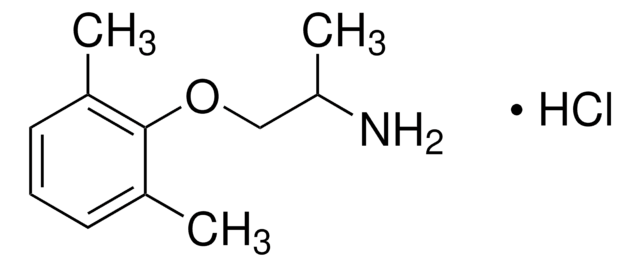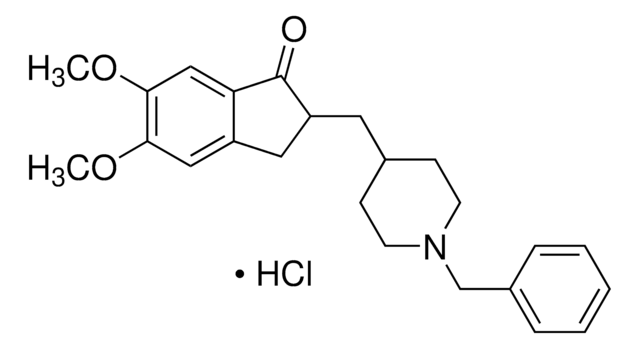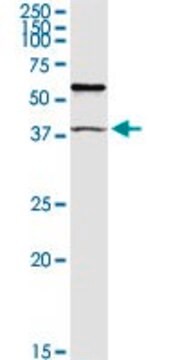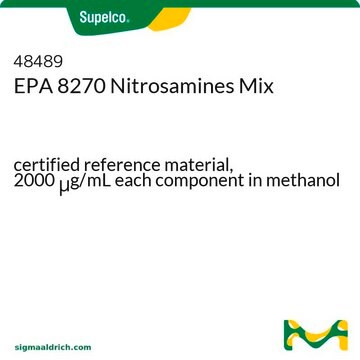About This Item
推薦產品
化驗
≥95% (HPLC, NMR)
形狀
powder
儲存條件
desiccated
顏色
white to tan
溶解度
H2O: ≥25 mg/mL
起源
Daiichi-Sankyo
運輸包裝
wet ice
儲存溫度
−20°C
SMILES 字串
O.Cl.Cl.C[C@@H]1O[C@@]2(CS1)CN3CC[C@H]2CC3.C[C@@H]4O[C@@]5(CS4)CN6CC[C@H]5CC6
InChI
1S/2C10H17NOS.2ClH.H2O/c2*1-8-12-10(7-13-8)6-11-4-2-9(10)3-5-11;;;/h2*8-9H,2-7H2,1H3;2*1H;1H2/t2*8-,10-;;;/m11.../s1
InChI 密鑰
ZSTLCHCDLIUXJE-GMLJRNIPSA-N
應用
生化/生理作用
特點和優勢
訊號詞
Danger
危險聲明
危險分類
Acute Tox. 3 Oral
儲存類別代碼
6.1C - Combustible acute toxic Cat.3 / toxic compounds or compounds which causing chronic effects
水污染物質分類(WGK)
WGK 3
閃點(°F)
Not applicable
閃點(°C)
Not applicable
分析證明 (COA)
輸入產品批次/批號來搜索 分析證明 (COA)。在產品’s標籤上找到批次和批號,寫有 ‘Lot’或‘Batch’.。
文章
Muscarinic acetylcholine receptors are G protein-coupled receptors (GPCRs) and mediate acetylcholine actions in the CNS and non-nervous tissues. Learn more about acetylcholine receptors and their role in cell signaling.
Muscarinic acetylcholine receptors are G protein-coupled receptors (GPCRs) and mediate acetylcholine actions in the CNS and non-nervous tissues. Learn more about acetylcholine receptors and their role in cell signaling.
我們的科學家團隊在所有研究領域都有豐富的經驗,包括生命科學、材料科學、化學合成、色譜、分析等.
聯絡技術服務








